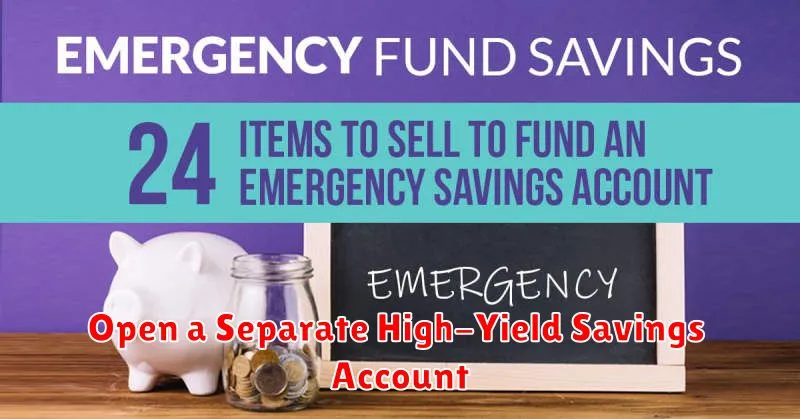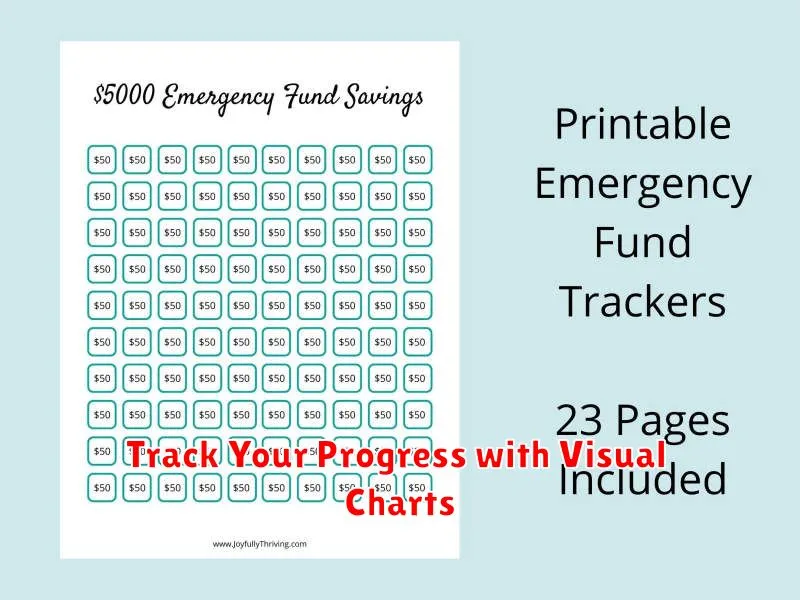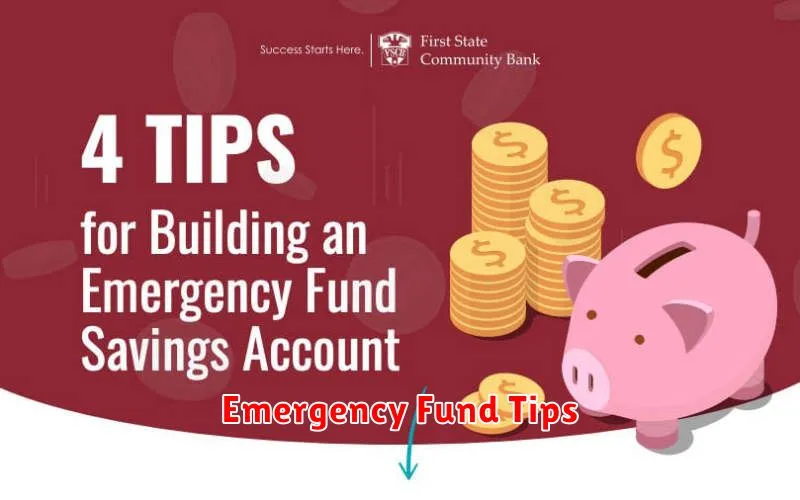In times of unforeseen challenges and financial uncertainty, having a robust emergency fund is not just a luxury but a necessity. With the unpredictability of today’s world, learning how to build an emergency fund from scratch can provide a safety net that safeguards your financial health. This article will guide you step-by-step through the process of establishing an emergency fund, ensuring you’re prepared to face any fiscal hurdle. Whether you’re starting with zero savings or looking to enhance your current financial strategies, this comprehensive guide will equip you with the necessary tools and insights to secure your future. Stay with us as we explore the vital steps to bolster your financial resilience, starting right now.
Why an Emergency Fund Is Essential
Having an emergency fund is crucial for maintaining financial stability in unforeseen circumstances. This fund serves as a financial buffer that can help you manage unexpected expenses without resorting to high-interest debt, such as credit cards or loans.
Life is unpredictable, and emergencies can manifest in various forms, such as sudden medical expenses, urgent home repairs, or unexpected job loss. Without an emergency fund, you might find yourself in a challenging situation, scraping together funds or increasing your debt.
An adequately funded emergency reserve empowers you to handle these situations with confidence and peace of mind. This financial safety net ensures that your day-to-day living is not disrupted, and it provides you the time and space to recover from any crises effectively.
Determine How Much You Really Need
When building an emergency fund, the first step is to identify how much you truly need. This amount should cover your basic living expenses for a set period, typically three to six months. Evaluate your monthly expenses by listing essential costs such as housing, utilities, groceries, transportation, and insurance.
Consider potential unexpected expenses that may arise, such as medical emergencies or urgent home repairs. It’s crucial to tailor the fund size to your personal circumstances, taking into account your household’s income stability, dependents, and the nature of your job.
Once you have a clear picture of your monthly expenses, calculate the total amount required to sustain your household for the desired period. This calculation will serve as your savings target. Regularly review and adjust this figure as your financial situation changes or expenses increase.
Start Small with Weekly Contributions
Building an emergency fund from scratch can seem daunting, but beginning with small, consistent contributions can make a significant impact over time. By committing to set aside a specific amount each week, you create a steady habit that gradually enhances your financial security.
Start by assessing your current financial situation and determine a realistic weekly amount you can contribute to your fund. Even a modest sum, such as $10 or $20, can add up and make a substantial difference. The key is to remain consistent and prioritize this contribution as part of your weekly expenses.
Utilize automated transfers to ensure these contributions are made without the need for manual action. This approach helps in maintaining discipline and avoiding the temptation to skip contributions.
As you become comfortable with this routine, consider gradually increasing the weekly amount when possible to accelerate the growth of your emergency fund. Remember, small steps taken regularly lead to big results, providing you with a financial cushion for unexpected situations.
Open a Separate High-Yield Savings Account

One of the most effective ways to start building an emergency fund from scratch is by opening a separate high-yield savings account. This type of account typically offers stronger interest rates compared to standard savings accounts, allowing your funds to grow more quickly over time.
By keeping your emergency funds in a dedicated account, you’ll not only benefit from higher interest rates but also establish a clear boundary between savings for unforeseen emergencies and other personal expenses. This separation is crucial in ensuring that the money is available when genuine emergencies arise, without being tempted to dip into these funds for non-essential spending.
When choosing a high-yield savings account, consider factors such as the annual percentage yield (APY), any associated fees, and account requirements. Many institutions offer competitive rates with no minimum balance requirements or monthly fees, making it accessible for those starting with a small amount.
In conclusion, opening a high-yield savings account is a strategic first step toward building a robust emergency fund. It promotes financial discipline while maximizing the growth potential of your savings.
Cut Non-Essential Expenses to Boost Savings
Building a substantial emergency fund requires strategic financial planning, and one of the most efficient strategies is to cut non-essential expenses from your budget. Identifying areas where money is unnecessarily spent is the first step to amplify your savings.
Start by reviewing your monthly expenses and segregate them into essential and non-essential categories. Essential expenses typically include rent, utilities, groceries, and healthcare. Conversely, non-essential expenses cover things like dining out, subscriptions, and discretionary purchases. Cutting down on these can significantly boost your savings over time.
Create a detailed budget to track your spending to ensure that no money is wasted on non-essentials. Adjust your lifestyle by finding affordable alternatives, such as cooking at home instead of eating out, or utilizing free entertainment options like community events or local parks.
Regularly revisiting your budget and financial goals will help maintain discipline in cutting non-essential expenses. Allocating these saved funds directly into your emergency account will gradually grow your financial cushion, offering peace of mind and fiscal stability.
Automate Transfers to Your Emergency Fund
One effective strategy to build your emergency fund is to automate transfers. Automating your savings ensures you consistently contribute to your emergency fund without the need for constant reminders or manual transactions.
Begin by setting up a recurring transfer from your checking account to your designated emergency fund account. Most banks and financial institutions offer this service, and it allows you to specify the amount and frequency of the transfers.
By scheduling these transfers to coincide with your paydays, you’ll make saving a priority, thus minimizing the temptation to spend that money elsewhere. Consistent, automatic contributions will help your fund grow steadily over time, providing a financial cushion in case of unforeseen events.
Remember, even small amounts can add up; the key is to stay consistent. Over time, automated contributions can significantly bolster your financial security.
Use Windfalls Like Bonuses or Tax Refunds
When creating an emergency fund from scratch, unplanned financial windfalls, such as bonuses or tax refunds, can be a strategic advantage. Instead of using these sums on impulse purchases, channeling them directly into your emergency fund can significantly bolster your financial safety net.
A common challenge in building an emergency fund is finding surplus cash. Therefore, any unexpected influx, like a year-end bonus or refund from your taxes, can be a perfect opportunity to jumpstart your savings. Allocating these windfalls to your emergency fund is a wise and immediate way to increase its size without affecting your regular income.
To make the most of these opportunities, decide ahead of time how you will handle windfalls. Consider automating the transfer of such funds into a separate savings account earmarked for emergencies, ensuring they are secured before you’re tempted to spend. This proactive approach can reinforce financial discipline and steadily build your emergency fund, preparing you for unforeseen circumstances.
Don’t Use the Fund Unless It’s Truly an Emergency
Building an emergency fund is a crucial financial step, but maintaining discipline over its use is equally important. This reserve should be treated as a safety net specifically for urgent and unforeseen expenses, such as medical emergencies, unexpected home repairs, or sudden job loss.
It’s essential to differentiate between true emergencies and regular expenses. A sale or a vacation, while tempting, does not constitute a need to dip into these savings. Such restraint is vital to ensure that the fund serves its purpose during a genuine crisis.
Establishing clear boundaries around what qualifies as an emergency helps in maintaining the integrity of your fund. By doing so, you’ll ensure that your preparedness for unforeseen events remains intact and your financial security is safeguarded.
Track Your Progress with Visual Charts

Creating an emergency fund from scratch requires not only financial discipline but also effective tracking of your savings journey. One of the most powerful methods to stay motivated is to utilize visual charts. These tools can provide you with a clear visual representation of your progress over time.
Visual charts, such as bar graphs or line charts, can effectively illustrate the growth of your savings. By consistently updating these charts, you gain a tangible sense of achievement as you see your fund grow incrementally. This visual affirmation serves as a motivational tool, helping you to maintain the discipline needed to reach your savings goals.
Tracking progress visually also helps in identifying patterns or trends in your savings behavior. If your progress slows down, a chart can immediately highlight it, allowing you to adjust strategies or increase your contributions. Conversely, seeing rapid growth can encourage you to sustain or even amplify your saving efforts.
Implementing visual tools to monitor your emergency fund can transform an otherwise mundane task into an engaging and insightful process. Not only do these charts showcase your achievements, but they also keep you focused and informed about your journey towards financial preparedness.

